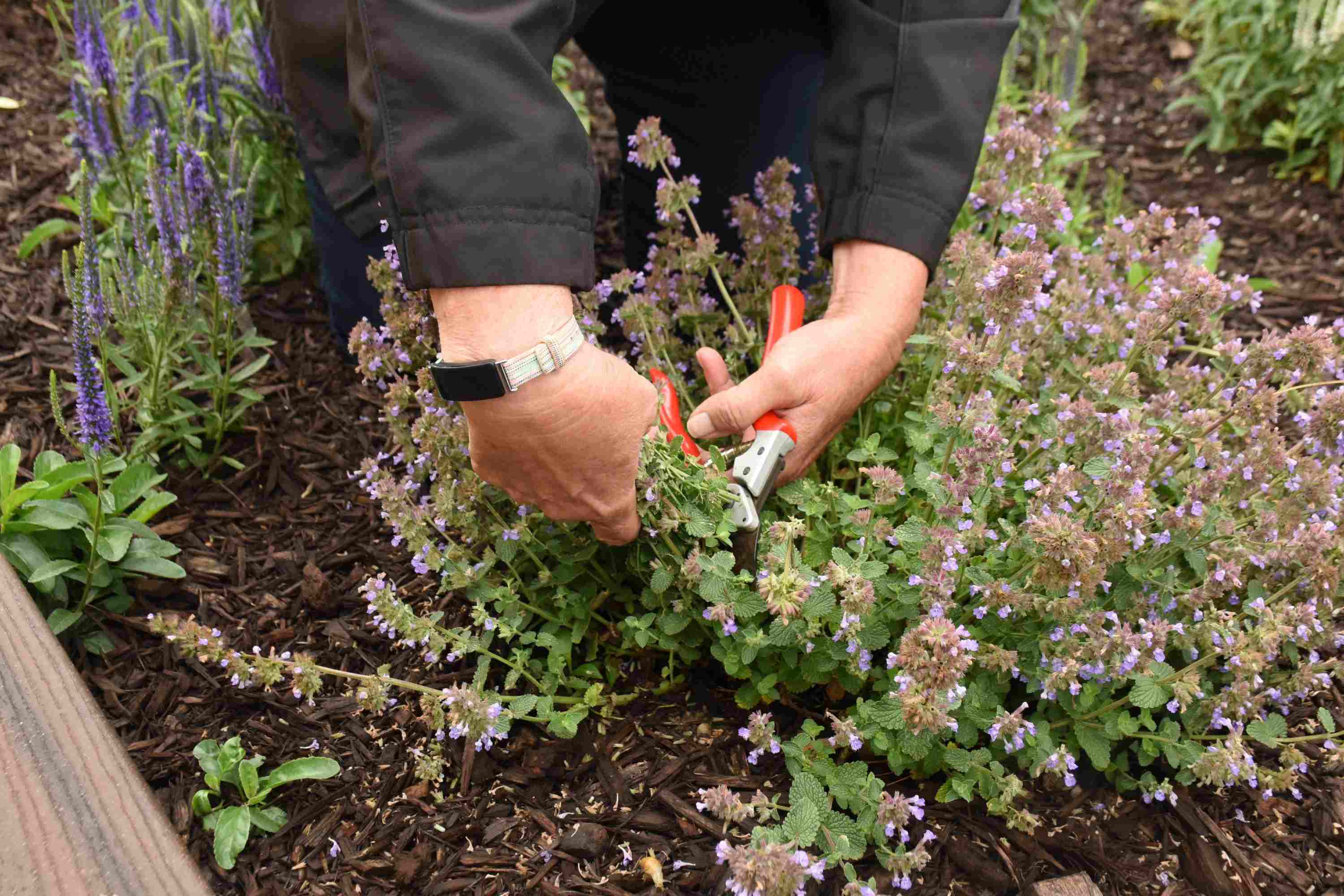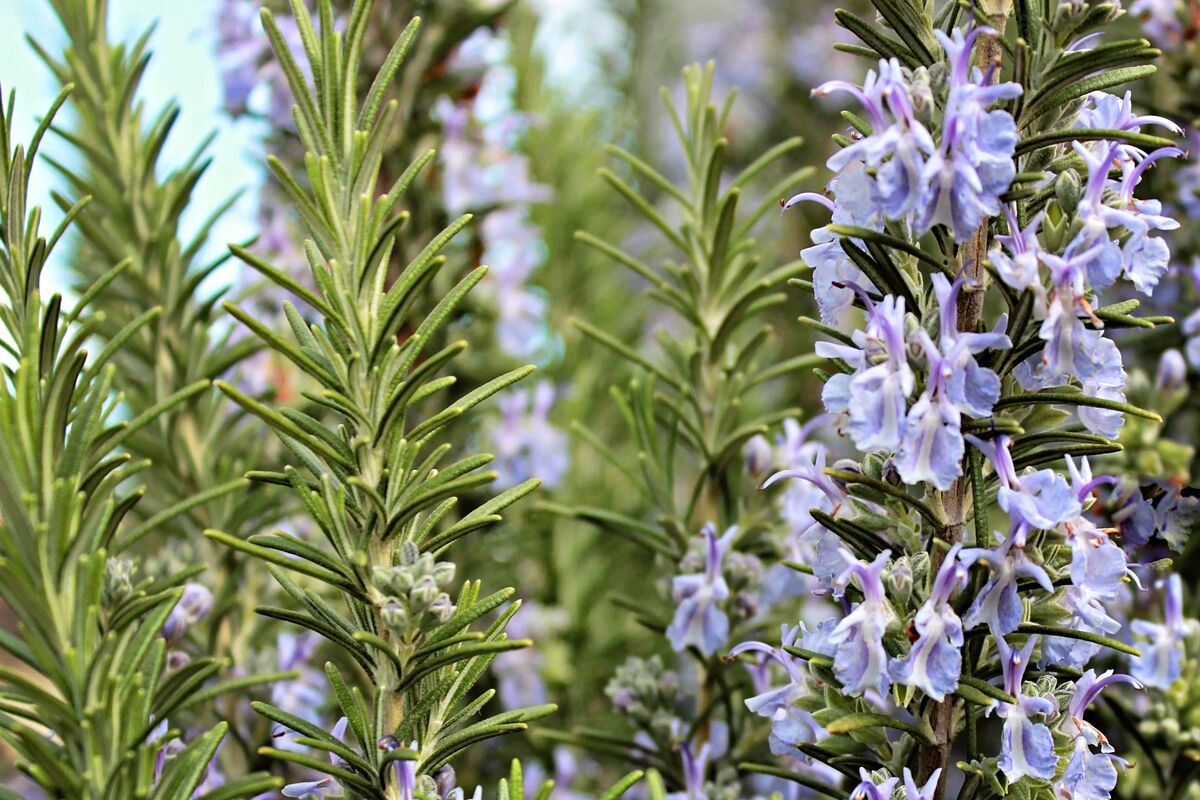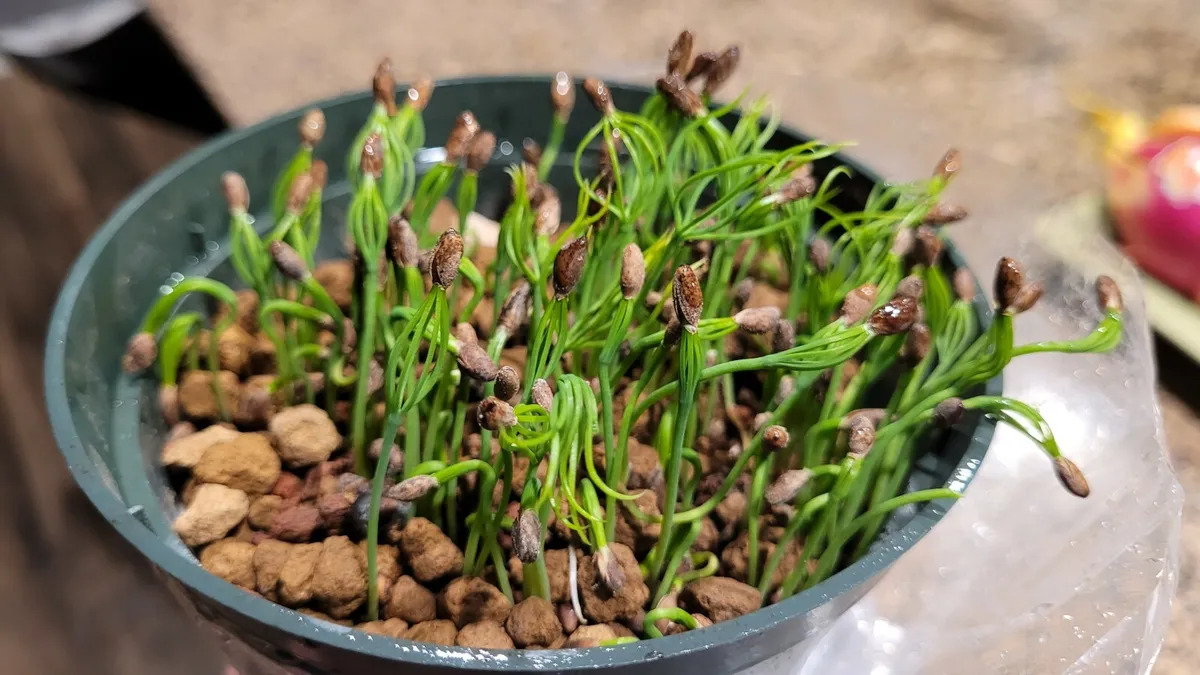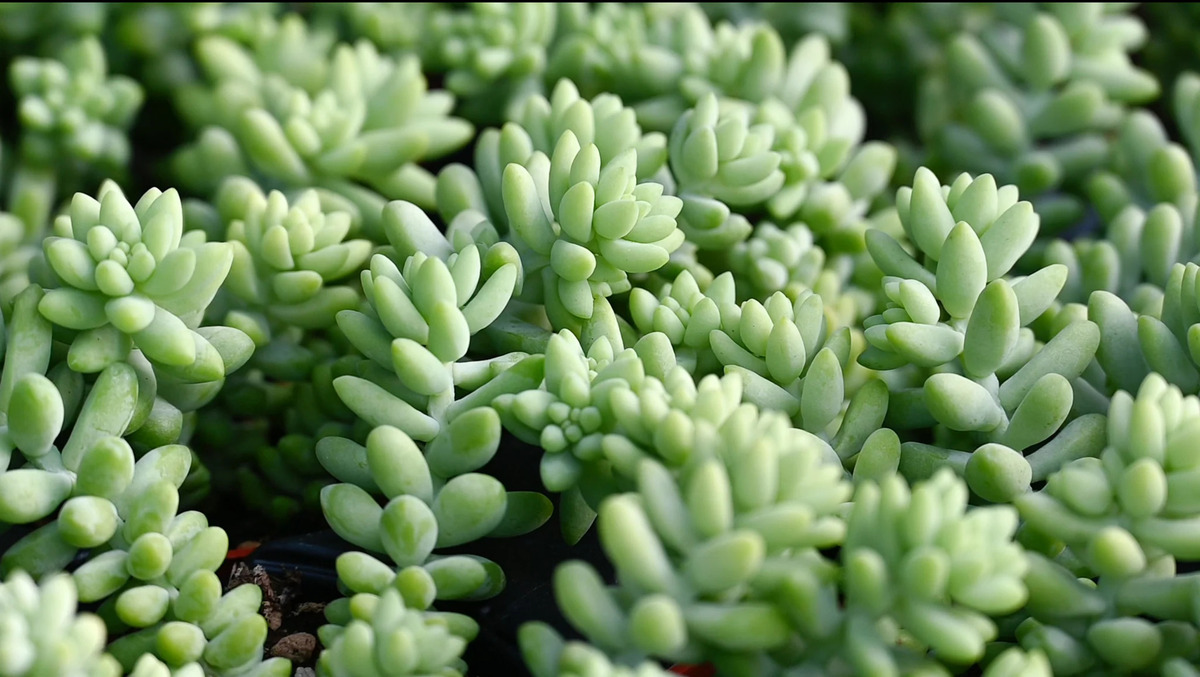Home>Gardening Techniques>Plant Care>How To Take Care Of Perennials


Plant Care
How To Take Care Of Perennials
Modified: February 8, 2024
Learn the essential plant care tips for perennials to ensure their long-lasting bloom. Discover how to properly water, fertilize and prune your perennial plants for optimal growth and beauty.
(Many of the links in this article redirect to a specific reviewed product. Your purchase of these products through affiliate links helps to generate commission for Chicagolandgardening.com, at no extra cost. Learn more)
Table of Contents
- Introduction
- Understanding Perennials
- Selecting the Right Perennials for Your Garden
- Planting Perennials
- Watering and Fertilizing Perennials
- Mulching Perennials
- Pruning and Deadheading Perennials
- Controlling Pests and Diseases in Perennials
- Dividing and Transplanting Perennials
- Winter Care for Perennials
- Conclusion
Introduction
Welcome to the world of perennial plants! If you’re a plant enthusiast or aspiring gardener, you’ve come to the right place. Perennials are a fantastic addition to any garden, offering long-lasting beauty and continuous growth year after year. Whether you’re a seasoned gardener or just starting out, understanding how to properly care for perennials is essential for their health and vitality.
Perennials are plants that have a lifespan of more than two years, meaning they will bloom and flourish for multiple growing seasons. Unlike annuals that complete their life cycle in one year, perennials are the backbone of a garden, providing a constant source of color and interest throughout the year.
One of the many advantages of growing perennials is the wide variety of options available. With numerous shapes, sizes, colors, and textures, there’s a perennial to suit every garden style and personal preference. Whether you’re looking to create a vibrant flower bed, a serene rock garden, or a lush green border, perennials can be the perfect choice.
In this comprehensive guide, we will explore everything you need to know about caring for perennials. From selecting the right plants for your garden to maintaining their health throughout the seasons, we’ll cover all the essential topics to ensure your perennials thrive. So let’s dive in and start uncovering the secrets to successful perennial care.
Understanding Perennials
Before diving into the care and maintenance of perennials, it’s important to have a basic understanding of these marvelous plants. Perennials are plants that live for more than two years, allowing them to grow, bloom, and produce seeds over multiple seasons. Unlike annuals, which must be replanted each year, perennials have a longer lifespan, making them a durable and sustainable choice for any garden.
Perennials come in a wide range of shapes, sizes, and colors, providing endless options for transforming your garden into a vibrant and diverse landscape. From delicate flowers like roses and lilies to robust foliage such as hostas and ornamental grasses, there’s a perennial to suit every taste and gardening style.
One of the key benefits of perennials is their ability to adapt to different climate conditions. They can withstand hot summers, cold winters, and everything in between, making them a resilient choice for gardeners in various regions. Additionally, perennials tend to have deeper root systems than annuals, which helps them access nutrients and water from the soil more effectively.
Another advantage of perennials is their ability to attract wildlife to your garden. Many varieties of perennials produce nectar-rich blooms that serve as an excellent food source for bees, butterflies, and other pollinators. By incorporating perennials in your garden, you can create a welcoming habitat for these important creatures and contribute to the overall health of the ecosystem.
It’s important to note that not all perennials are created equal when it comes to bloom times. Some perennials are early bloomers, showcasing their beauty in the spring, while others have a later flowering period in the summer or fall. By carefully selecting a combination of early, mid, and late-blooming perennials, you can ensure that your garden remains in bloom throughout the growing season.
Understanding the lifecycle of perennials is also crucial for successful care. Perennials have distinct growth phases, including dormancy, vegetative growth, flowering, and seed production. Each phase requires specific care and attention to support the plant’s overall health and longevity.
With a deeper understanding of what perennials are and their unique characteristics, you’ll be better equipped to provide the proper care and maintenance they need. In the following sections, we’ll explore the best practices for selecting, planting, and caring for your beloved perennials.
Selecting the Right Perennials for Your Garden
When it comes to selecting perennials for your garden, the options can seem overwhelming. With countless varieties available, it’s essential to choose plants that not only suit your personal preferences but also thrive in your specific growing conditions. Here are some key factors to consider when selecting the right perennials for your garden:
1. Climate and Hardiness Zones: Different plants have specific climate requirements, so it’s important to choose perennials that are well-suited to your region’s hardiness zone. Determine your zone by referring to the USDA Hardiness Zone Map or consult with a local gardening expert for guidance on plants that are more likely to thrive in your specific area.
2. Sunlight and Shade: Assess the amount of sunlight different areas of your garden receive throughout the day. Some perennials prefer full sun, while others thrive in partial shade or full shade. Consider the light conditions in your garden and select plants accordingly to ensure they receive the optimal amount of sun exposure.
3. Soil Type and pH: Perennials have varying soil preferences, so it’s important to understand your soil type and pH level. Some plants prefer well-draining soil, while others thrive in heavy clay or moist soil. Testing your soil and amending it if necessary can help create the ideal growing conditions for your chosen perennials.
4. Height and Spacing: Consider the mature height and spread of the perennials you’re interested in. This will determine how much space they will need in your garden. Take into account the height of neighboring plants and plan accordingly to avoid overcrowding or shading of smaller plants.
5. Bloom Time and Duration: Determine the desired blooming period for your garden and choose perennials with different bloom times to ensure continuous color and interest throughout the seasons. Also, consider the duration of the blooms to select plants that will provide lasting impact and appeal.
6. Maintenance Requirements: Consider the level of maintenance you’re willing to invest in your garden. Some perennials require frequent deadheading, pruning, or division, while others are lower maintenance. Assess your available time and resources and choose plants that align with your preferred level of care.
7. Personal Preferences: Ultimately, select perennials that resonate with your personal taste and gardening style. Whether you prefer vibrant flowers, lush foliage, or a combination of both, choose plants that bring you joy and create the desired atmosphere in your garden.
Researching and planning ahead will help you make informed decisions when selecting perennials for your garden. Take your time to browse nurseries, consult gardening resources, and seek advice from experts to ensure the best results. By choosing the right perennials for your garden, you’ll lay the foundation for a beautiful and thriving landscape.
Planting Perennials
Planting perennials correctly is crucial for their long-term health and growth. By following these essential steps, you can ensure that your perennials establish well and thrive in your garden:
1. Site Preparation: Before planting, prepare the site by removing any weeds or grass from the area. Loosen the soil to a depth of 12-18 inches and amend it with organic matter such as compost to improve fertility and drainage.
2. Digging the Hole: Dig a hole that is twice the width of the plant’s container and slightly shallower than its root ball. Gently loosen the roots if they are tightly bound and place the plant in the hole, ensuring that the crown is level with or slightly above the soil surface.
3. Backfilling and Watering: Backfill the hole with soil, firming it gently around the roots to eliminate air pockets. After planting, water the perennials thoroughly to settle the soil and provide the necessary hydration.
4. Spacing: Ensure proper spacing between perennials to allow for adequate air circulation and prevent overcrowding. Follow the planting instructions for each specific plant, but as a general rule, provide enough space for the mature width of the plant and consider their height to prevent shading of shorter plants.
5. Mulching: Apply a layer of organic mulch, such as wood chips or straw, around the base of the plants, leaving a small gap around the stems to prevent moisture buildup and potential rot. Mulch helps conserve moisture, suppress weeds, and regulate soil temperature.
6. Watering: After planting, water the perennials deeply to ensure the roots are properly hydrated. Keep the soil consistently moist, especially during the first growing season, but avoid overwatering, as excessive moisture can lead to root rot. Monitor the soil moisture and adjust watering accordingly based on weather conditions.
7. Stake Support (if necessary): Some taller or vining perennials may require staking or support structures to prevent them from flopping over or getting damaged by strong winds. Install the stakes or supports at the time of planting to avoid root disturbance later on.
8. Labeling: It’s helpful to label your perennials after planting, especially if you have multiple varieties in your garden. This will help you keep track of the plants, their specific care requirements, and enable you to easily identify them during maintenance tasks.
9. Ongoing Care: Once planted, monitor the perennials for any signs of stress, such as wilting or yellowing leaves. Continue to water, weed, and provide any necessary support to ensure their healthy establishment. Follow specific care guidelines for each perennial, including fertilization and pruning, to promote optimal growth.
By following these planting guidelines and providing proper care, you’ll give your perennials the best chance of establishing strong root systems and flourishing in your garden. Enjoy watching them grow and bloom, bringing beauty and joy to your outdoor space.
Watering and Fertilizing Perennials
Proper watering and fertilizing are essential for the health and vitality of your perennial plants. Understanding their specific needs and following these guidelines will help ensure their successful growth and abundant blooms:
Watering:
Watering is a critical aspect of perennial care, as it directly impacts the plant’s ability to absorb nutrients and thrive. Here are some tips for watering perennials:
- Water deeply and infrequently: Instead of frequent shallow watering, give perennials a thorough watering, penetrating the soil to reach the root zone. This encourages deep root growth and makes the plant more resilient to drought.
- Water in the morning: Watering in the morning allows the foliage to dry before evening, reducing the risk of disease and fungal infections. It also ensures that the plants have sufficient moisture to withstand the heat of the day.
- Monitor soil moisture: Check the moisture level of the soil regularly by inserting your finger into the soil to a depth of a few inches. If it feels dry, it’s time to water. Avoid overwatering, as it can lead to root rot and other problems.
- Watering frequency: The frequency of watering can vary depending on factors such as the plant’s water requirements, weather conditions, and soil type. Always consider these factors and adjust your watering schedule accordingly.
- Use a watering method appropriate for the plant: Some perennials prefer overhead watering, while others prefer watering at the base to prevent foliage diseases. Be mindful of the specific watering needs of each plant and adjust your watering technique accordingly.
Fertilizing:
Proper fertilization provides the necessary nutrients for perennials to grow vigorously and produce abundant blooms. Here are some tips for fertilizing perennials:
- Soil testing: Before applying any fertilizer, it’s beneficial to test your soil to determine its nutrient content. Soil tests can help identify any deficiencies and guide you in choosing the right fertilizers.
- Choose the right fertilizer: Select a balanced, slow-release fertilizer specifically formulated for perennials. Look for a fertilizer with equal or balanced ratios of nitrogen (N), phosphorus (P), and potassium (K) for overall plant health and balanced growth.
- Timing: Apply fertilizer in early spring when the plants start to show new growth. Avoid fertilizing in late summer or early fall, as it may stimulate new growth that can be damaged by winter frosts.
- Follow package instructions: Read and follow the instructions on the fertilizer package carefully. Different fertilizers have varying application rates, so it’s important to apply the correct amount for each plant.
- Apply evenly: Spread the fertilizer evenly around the base of the plants, avoiding direct contact with the foliage. Lightly scratch the fertilizer into the soil surface and water thoroughly afterward to help the nutrients penetrate the root zone.
- Avoid over-fertilization: Over-fertilization can lead to excessive foliage growth, weak stems, and reduced flower production. Follow the recommended dosage and frequency to prevent nutrient imbalances and potential damage to the plants.
By providing the right amount of water and nutrients through proper watering and fertilizing, you can help your perennials thrive and reach their full potential. Regular monitoring and adjustment of your watering and fertilizing practices will ensure the best results for your garden.
Mulching Perennials
Mulching is a beneficial practice that provides numerous advantages to perennial plants. By applying a layer of mulch around your perennials, you can enhance their growth, conserve moisture, suppress weed growth, and improve the overall health of your garden. Here’s what you need to know about mulching perennials:
Benefits of Mulching:
- Moisture Conservation: Mulch acts as a protective barrier, reducing water evaporation from the soil and helping to keep the root zone consistently moist. This is especially beneficial during periods of hot weather or drought.
- Weed Suppression: A layer of mulch helps to smother weeds by blocking sunlight and preventing weed seeds from germinating. This reduces competition for water and nutrients, allowing your perennials to grow more effectively.
- Temperature Regulation: Mulch acts as insulation, regulating soil temperatures by keeping it cooler in the hot summer months and warmer during the cold winter months. This helps to protect the roots from extreme temperature fluctuations.
- Organic Matter Addition: As mulch gradually decomposes, it adds organic matter to the soil, which improves soil structure, fertility, and beneficial microbial activity. This contributes to the overall health of your perennials.
- Erosion Control: Mulch helps to prevent soil erosion by reducing the impact of heavy rain and wind. It keeps the soil in place and protects the delicate roots of your perennials.
Mulching Techniques:
- Choosing the Right Mulch: Select a mulch material that suits your preferences and garden aesthetics. Organic options, such as shredded bark, straw, or compost, break down over time and enrich the soil. Inorganic options, such as gravel or landscape fabric, provide a long-lasting, low-maintenance option.
- Applying the Mulch: Apply a layer of mulch around your perennials, ensuring it is 2-4 inches deep. Keep the mulch several inches away from the base of the plants to prevent moisture buildup and potential rot. Spread the mulch evenly, extending it beyond the plant’s dripline to cover the root zone.
- Seasonal Adjustments: Monitor the depth of the mulch and replenish it as needed. Over time, organic mulch may break down and become thinner. In the spring, remove any excess mulch to avoid suffocating new growth, and then reapply as necessary.
- Consistent Maintenance: Regularly inspect your mulched beds for any signs of weed growth. Pull out weeds as soon as they appear to prevent them from establishing and competing with your perennials for resources. During watering, ensure that the mulch is not obstructing water penetration.
Mulching your perennials provides numerous benefits and contributes to their overall health and productivity. With the right choice of mulch and consistent maintenance, you’ll create optimal growing conditions while improving the aesthetic appeal of your garden. Enjoy the rewards of mulching as you watch your perennials flourish.
Pruning and Deadheading Perennials
Pruning and deadheading are important maintenance practices that help maintain the health, shape, and blooming potential of your perennial plants. By understanding how and when to prune and deadhead your perennials, you can promote vigorous growth and prolong their blooming period. Here’s what you need to know:
Pruning Perennials:
- Timing: Pruning time varies depending on the specific perennial. Generally, it’s best to prune perennials in early spring before new growth emerges. This allows for the removal of any dead or damaged stems and promotes the development of healthy new growth.
- Tools: Use sharp and clean pruning shears or hand pruners to make precise cuts. Disinfect your tools with a solution of 1 part bleach to 9 parts water to prevent the spread of diseases.
- Deadheading: Deadheading involves the removal of spent flowers to encourage continuous blooming. Snip off the faded flowers just above a healthy set of leaves or flower buds. This redirects the plant’s energy from seed production to further flower development.
- Pruning Techniques: When pruning, remove any dead, diseased, or damaged stems. Cut them back to healthy, outward-facing buds or a lateral branch. This helps maintain the plant’s shape, improves air circulation, and reduces the risk of pests and diseases.
- Thinning and Dividing: Some perennials benefit from periodic thinning or dividing to prevent overcrowding and rejuvenate their growth. This involves removing overcrowded or weak stems and separating the plant into smaller divisions, replanting them as needed.
- Pruning Tolerance: While most perennials tolerate pruning quite well, it’s essential to know the specific pruning requirements for each plant. Some perennials, such as ornamental grasses, should be pruned in late winter or early spring, while others may benefit from a midsummer trim to encourage a second bloom.
Deadheading Perennials:
- Continuous Blooming: Deadheading perennials helps divert energy from seed production to further flower development, resulting in prolonged blooming and a tidier appearance.
- Timing: Deadhead flowers as soon as they start to fade and before seed formation begins. Regularly inspect your plants and remove spent flowers to encourage new growth and continuous blooming.
- Techniques: Use sharp pruners or your fingers to pinch or snip off faded flowers just above a healthy set of leaves or lateral bud. If the plant has multiple stems or flowers, repeat the process for each individual flower.
- Exceptions: Some perennials, such as those with attractive seed heads or those grown for their winter interest, may be left unpruned to provide visual interest and food sources for wildlife during the dormant season.
Pruning and deadheading perennials not only improve their appearance but also promote healthier growth, increased blooming, and overall longevity. Regularly inspect your plants, familiarize yourself with their specific pruning needs, and practice these techniques to ensure your perennials thrive and continue to grace your garden with their beauty.
Controlling Pests and Diseases in Perennials
Pests and diseases can pose a significant threat to the health and vitality of your perennial plants. However, with proper monitoring, preventive measures, and timely intervention, you can effectively control and minimize the damage caused by these common issues. Here are some essential tips for controlling pests and diseases in your perennials:
1. Regular Inspection: Regularly inspect your perennials for signs of pests or diseases. Look for chewed leaves, discolored foliage, distorted growth, wilting, or any unusual symptoms. Early detection allows for prompt action and prevents further spread or damage.
2. Proper Plant Spacing: Planting perennials with sufficient space between them promotes air circulation and reduces the risk of diseases that thrive in damp, crowded conditions. Adequate spacing also makes it easier to spot and address any issues that may arise.
3. Clean Garden Practices: Maintain good garden hygiene by removing fallen leaves, spent flowers, and any debris that may harbor pests or disease-causing pathogens. Dispose of these materials properly to prevent their return to the garden through compost or wind-blown dispersal.
4. Mulching: Mulching not only helps retain moisture and suppress weeds but can also act as a barrier against certain pests. For example, organic mulches can deter slugs and snails, which can damage the foliage of perennials. Avoid piling mulch directly against the stems to prevent moisture buildup and potential rot.
5. Handpicking: For smaller pests, such as aphids or caterpillars, manually remove them from the plants by handpicking or using a gentle spray of water to dislodge them. Dispose of or destroy the pests to prevent their return.
6. Natural Predators and Beneficial Insects: Encourage natural predators and beneficial insects, such as ladybugs, lacewings, and praying mantises, to reside in your garden. These beneficial insects prey on common garden pests, helping to maintain a balanced ecosystem and reduce the need for chemical interventions.
7. Organic Pest Control: Utilize organic pest control methods, such as insecticidal soaps, neem oil, or diatomaceous earth, to target specific pests while minimizing harm to beneficial insects and the environment. Follow the instructions carefully when applying these products.
8. Disease-Resistant Varieties: When selecting perennials, consider choosing disease-resistant varieties that are less susceptible to common diseases. Research and choose plants that have proven resistance to prevalent diseases in your area.
9. Prompt Treatment: If pest or disease issues escalate despite preventive measures, promptly treat affected plants with appropriate interventions, such as organic pesticides or fungicides, as a last resort. Follow the instructions provided by the manufacturer and apply treatments according to the recommended frequency.
By implementing these pest and disease control practices, you can minimize the impact of these common issues in your perennial garden. Vigilance, early detection, and a proactive approach will help maintain the health and beauty of your perennials, enabling them to thrive and delight you for years to come.
Dividing and Transplanting Perennials
Dividing and transplanting perennials is a valuable practice that helps promote healthier growth, rejuvenates older plants, and allows you to expand your garden. By dividing and transplanting your perennials, you can maintain their vigor, control their spread, and create new plantings throughout your garden. Here are some important considerations for dividing and transplanting perennials:
1. Timing: Dividing and transplanting should be done at the appropriate time, typically during the plant’s dormant season or when it’s less stressed. For most perennials, early spring or fall is the ideal time to divide and transplant, as the weather is cooler and moisture is more readily available.
2. Preparation: Before dividing or transplanting, thoroughly water the perennial to ensure it is well-hydrated. Prepare the new planting location by loosening the soil, removing weeds or grass, and adding organic matter to improve fertility and drainage.
3. Digging: Carefully dig around the perimeter of the perennial, creating a wide and deep trench to minimize root damage. Use a garden fork or sharp spade to loosen the soil and gently lift the plant from the ground. Shake off excess soil from the roots to make division easier.
4. Division Techniques: Depending on the perennial’s growth habit and root structure, divide the plant into smaller sections. Some perennials can be easily separated with your hands, while others may require a sterile knife or garden shears to make clean cuts through the rootball. Each division should have healthy stems, leaves, and ample root system.
5. Transplanting: Plant the divisions immediately in their new location, ensuring they are planted at the same depth as they were originally. Water the transplants well to settle the soil and avoid air pockets around the roots. Provide adequate irrigation during the establishment period to help the transplants settle into their new environment.
6. Care for Divisions: Newly divided perennials require extra care and attention to ensure their successful establishment. Monitor soil moisture levels and water as needed to keep the soil consistently moist, but not waterlogged. Protect the transplants from extreme weather conditions by providing temporary shade or cover when necessary.
7. Pruning: In the process of dividing, it’s common to trim back the foliage of the plant to reduce stress and balance the root-to-shoot ratio. Pruning also helps maintain the plant’s overall shape and conserves energy while it focuses on root development.
8. Labeling: It’s important to label the newly divided perennials with their name, planting date, and any additional notes for future reference. This will help you track their progress, remember their specific care requirements, and avoid confusion in your garden.
9. Rejuvenation: Dividing and transplanting perennials can rejuvenate older, overcrowded plants, promoting new growth and enhancing their overall health and blooming potential. It’s a great opportunity to revitalize the appearance and productivity of your perennial garden.
By practicing careful division and transplanting techniques, you can successfully propagate and revitalize your perennials, expanding your garden and ensuring the longevity and vibrancy of your plantings. Enjoy the satisfaction of creating new plantings and witnessing the renewed vitality of your perennial treasures.
Winter Care for Perennials
Winter can be a challenging time for perennials, as they face harsh weather conditions and potential damage. However, with proper winter care and protection, you can help your perennials survive the cold months and emerge strong and healthy in the spring. Here are some essential tips for winter care of perennials:
1. Clean Up: Before winter sets in, clean up your perennial beds by removing fallen leaves and debris. This helps prevent the development of diseases and reduces hiding places for pests that can overwinter.
2. Mulching: Apply a layer of mulch around the base of your perennials to help insulate the soil, regulate temperatures, and protect the root system from freeze-thaw cycles. Use organic mulch, such as straw or shredded bark, and apply it to a depth of 2-4 inches, taking care to keep the mulch a few inches away from the plant stems to avoid moisture buildup and potential rot.
3. Evergreen Perennials: Evergreen perennials, such as hellebores or ornamental grasses, may not require much additional winter care. However, you can provide some protection by wrapping them loosely in burlap or a frost cover to shield them from drying winds and heavy snowfall.
4. Watering: Proper watering is important before winter. Water your perennials deeply but less frequently, ensuring that the root zone is well-hydrated before the ground freezes. This helps prevent dehydration during dry winter periods.
5. Protect Tender Perennials: If you have tender perennial plants that are not hardy in your region, such as certain varieties of roses or tropical plants, consider moving them to a sheltered location, such as a garage or greenhouse, before the first frost. Ensure they are properly watered and provide supplemental light if needed.
6. Snow Management: Heavy snow can put stress on perennials, causing breakage or smothering. If there is excessive snow accumulation, gently brush off the snow from the plants using a broom or your hand. This prevents damage and allows the plants to breathe.
7. Winter Pruning: Avoid pruning perennial plants in late fall or winter, as it can stimulate new growth that may be vulnerable to frost damage. Instead, wait to prune until early spring when the threat of freezing temperatures has passed.
8. Monitor for Pests and Diseases: Even during the winter, it’s important to keep an eye out for signs of pests or diseases on your perennials. Inspect the plants regularly and take appropriate measures if any issues are detected.
9. Be Patient: During the winter months, perennials naturally go dormant and may appear lifeless. It’s important to be patient and resist the temptation to prematurely remove or disturb the plants. Wait until spring arrives to assess any potential damage and take necessary action.
By providing proper care and protection, you can help your perennials survive the winter and thrive once warmer weather returns. Take the time to implement these winter care practices, and you’ll be rewarded with healthy, vibrant perennials in the seasons to come.
Conclusion
Caring for perennials requires knowledge, attention, and a bit of green thumb magic. By understanding the unique needs of perennials and implementing the proper care practices outlined in this guide, you can create a stunning and flourishing garden that brings joy and beauty year after year.
From selecting the right perennials for your garden based on climate, sunlight, and soil conditions to planting them correctly and providing adequate water and fertilization, every step contributes to the overall health and vitality of your plants. Pruning and deadheading help maintain their shape and encourage continuous blooms, while controlling pests and diseases ensures their longevity and reduces damage.
Dividing and transplanting perennials rejuvenates older plants, helps control their spread, and allows for expansion in your garden. And during the winter, proper care and protection ensure their survival and help them emerge strong and healthy in the spring.
Remember, gardening is a journey of discovery and learning. Each perennial plant has its unique characteristics and preferences, so take the time to observe and understand the needs of your specific varieties. Adapt your care practices accordingly and be mindful of the changing seasons.
With patience, dedication, and a little bit of love, your perennial garden will reward you with an ever-changing tapestry of colors, textures, and scents. Embrace the beauty and tranquility that perennials bring to your outdoor space, and enjoy the continuous cycle of growth and bloom.
Now, it’s time to put your newfound knowledge into practice and embark on an incredible journey of perennial care. May your garden flourish and become a haven of natural wonders and serenity!






